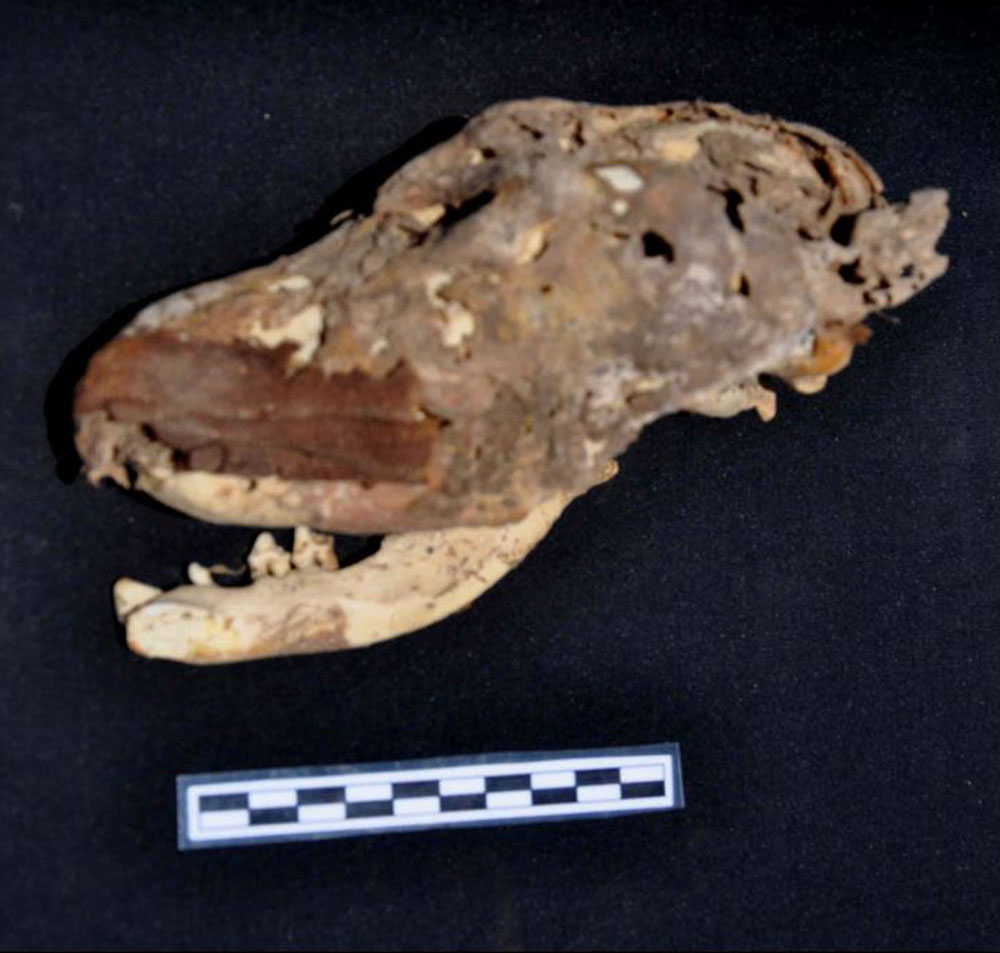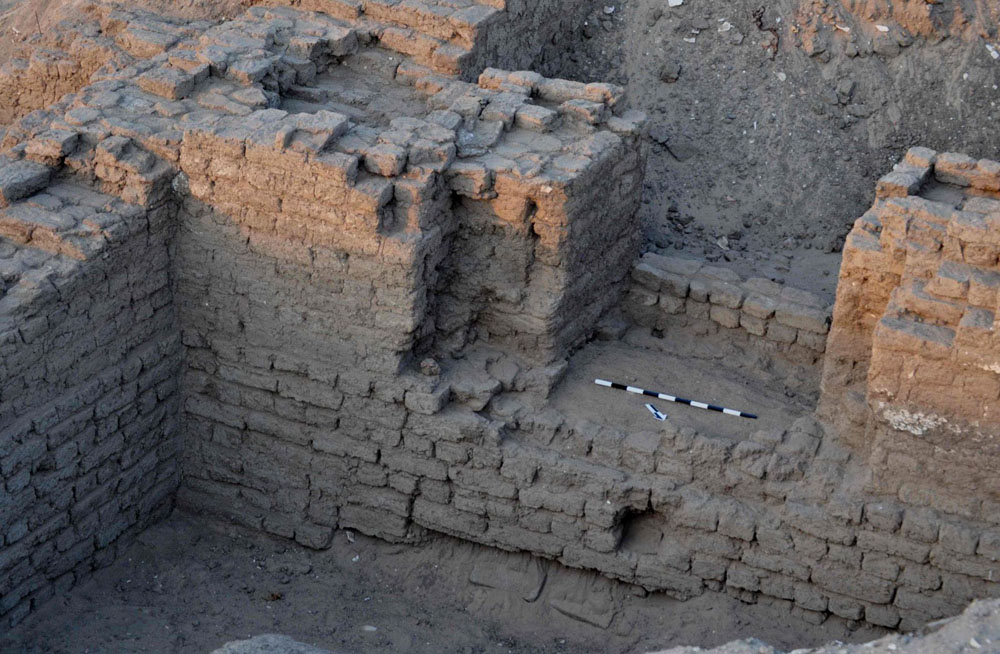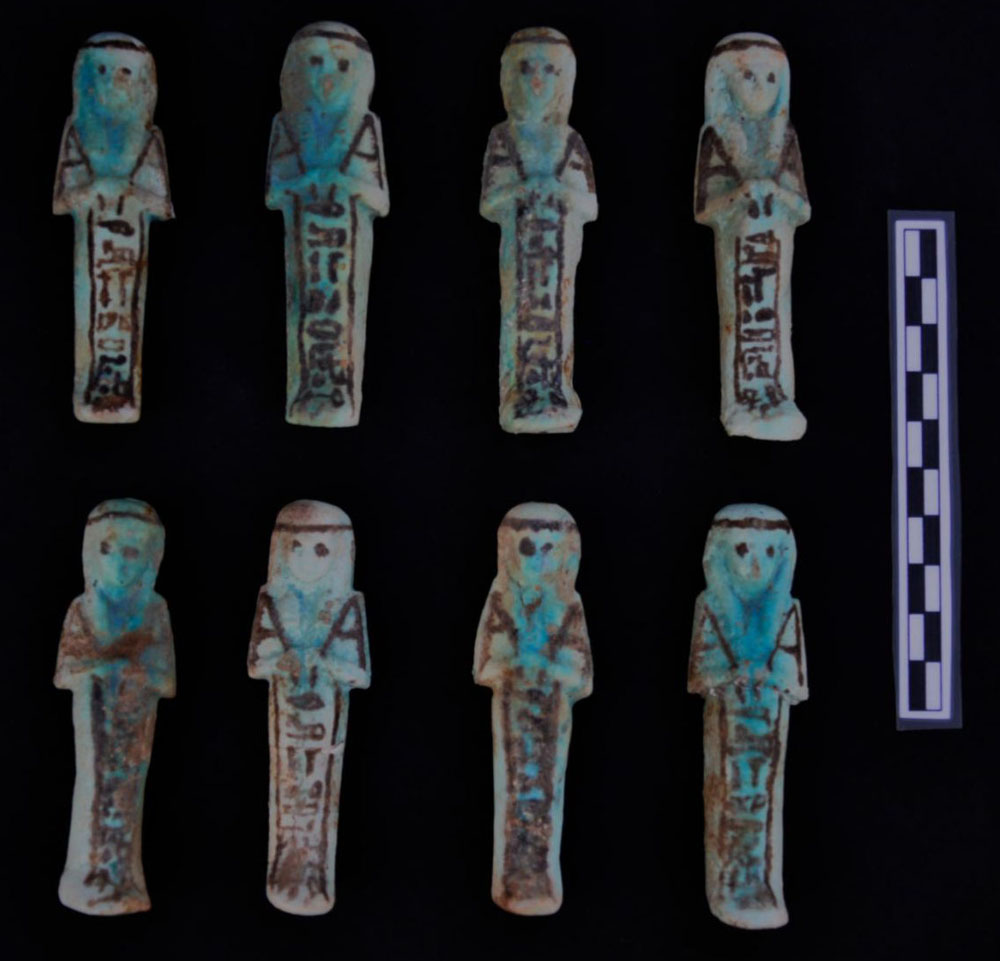Animal Mummies Discovered at Ancient Egyptian Site

A wealth of new discoveries, from animal mummies linked to the jackal god and human remains to an enigmatic statue, are revealing the secrets of an ancient holy place in Egypt once known as the "Terrace of the Great God."
The mysterious wooden statue may be a representation of Hatshepsut, a female pharaoh who ruled the land 3,500 years ago, the researchers say. She was typically portrayed as a man in statues, but this one, giving a nod to femininity, had a petite waist.
The discoveries were made during one field season this past summer by a team led by Mary-Ann Pouls Wegner, director of the excavation and a professor at the University of Toronto. The findings offer insight into Abydos, a site that was considered a holy place, Pouls Wegner said at a recent meeting of the Society for the Study of Egyptian Antiquities in Toronto, Canada. [Photos of the Egypt mummy]
Burial of a god
In fact, the earliest kings of Egypt, those who ruled nearly 5,000 years ago, chose to be buried at Abydos. Ancient Egyptians believed that the god of the underworld, Osiris, was buried there as well and there was a tomb at the site that they deemed to be his. According to legend, the god's brother, Set, killed Osiris and his wife Isis, then gathered his remains and brought him back to life. Their son, Horus, is said to have fought Set in battle.
A temple dedicated to Osiris was also constructed at Abydos and every year, in a great procession, the Egyptians would carry an image of Osiris from the temple to his tomb, where it was kept overnight with rituals being performed.
The procession ended with the image of Osiris returning to the temple to great fanfare. "There's a really neat reference on some of the Middle Kingdom (4,000 to 3,600 years ago) material to hearing the sound of jubilation," Pouls Wegner told LiveScience in an interview.
Get the world’s most fascinating discoveries delivered straight to your inbox.
Exploring the terrace
This procession was so popular that Egyptians, both royal and private individuals, built chapels lining the route so that they could take part in the event for eternity.
It had been hypothesized that these chapels gradually encroached on the route, despite a death penalty in place for doing so. According to this theory the more recent chapels would be nearest the route while earlier ones would be farther back.
The team's discovery of an early offering chapel dating back more than 3,600 years, located close to the processional route, suggests this wasn't the case.
"It's rare that you can actually disprove or prove your research question in the course of one short season of fieldwork, but that's exactly what happened," Pouls Wegner said at the meeting.
The chapel itself had a place for libations and an emplacement for a stone stele that is no longer there. "It [the chapel] must have been for someone of some importance," Pouls Wegner said, adding that it appears to have been a "focal point" for offerings over several centuries.
A mystery building with animal mummies
In the same season the team investigated a "monumental" building with three chambers at the back, on the western side, and a transverse corridor in front on the eastern side.
While the thickness of the walls — 6 feet (2 meters) thick — suggests the building could have been used as a storage area, its design indicates a religious purpose. "It looks much more like a temple plan," Pouls Wegner said.
Scant inscriptions found at the site refer to Seti I, a pharaoh of Egypt who ruled more than 3,200 years ago, suggesting it was built for the pharaoh. The temple's bricks are also identical to those found in a nearby temple known to have been started by Seti.
Packed tightly into one of the chambers, the team discovered a cache of at least 83 animal mummies, which dates back more than 2,000 years. Most of the animals are dogs, although they also found two cats as well as sheep and goats.
The team believes that the animals were each sacrificed and are from an as-yet-undiscovered tomb in the area that likely dates to a later period than the monumental building.
"I think there's another tomb there, another third intermediate period (3,000 to 2,600 years ago), tomb, a very large one," said Pouls Wegner. This tomb would likely have been re-used at a later date.
"In some subsequent period, when that tomb was robbed, disturbed, the animals were simply, you know, taken out with a pitchfork and became disarticulated and dissociated from their original linen wrapping," Pouls Wegner told the Toronto audience. [10 Weird Ways We Deal With the Dead]
The presence of so many dogs is likely related to Wepwawet, a jackal god whose procession immediately precedes Osiris' at Abydos. He "overthrows and subdues all potential enemies," writes David O'Connor, a professor at New York University, in his book "Abydos: Egypt's First Pharaohs and the Cult of Osiris" (Thames and Hudson, 2009).
Pouls Wegner explained that people visiting the temple were probably able to get a sacrificed dog to offer the god. "I think this is just another form of votive activity really, in addition to putting out a spoken prayer or commemorating prayer on a stele, that one could sacrifice an animal that was associated with him in some way."
Nursing a dog back to health
One of the dogs appears to have suffered a fracture on its long bone that had subsequently healed up, suggesting someone nursed the dog back to health before sacrificing it. [10 Things You Didn't Know About Dogs]
The researchers aren't sure why the Egyptians would bother doing this instead of killing the canine right away. It could be that the temple didn't have a buyer or perhaps the dog belonged to someone and was rounded up by temple workers.
"It could be that the dog had some sort of owner who took care of him at one point in his life," Pouls Wegner said.
A pharaoh's statue
In a chamber next to the animal mummies, the team uncovered a wooden statue encrusted with mud and termite droppings. An Egyptian wood conservation expert restored the statue to reveal a 25-inch (65 cm)-tall figure wearing a Nemes headdress, the mark of a pharaoh. "There are very few royal wooden statues left," Pouls Wegner said.
The statue's proportions matched up with those of statues dating from the 18th dynasty of Egypt's history, from about 3,550 to 3,300 years ago. That is, with one big exception — the waist is significantly thinner.
This brought up an intriguing question — could this statue be a representation of Hatshepsut, a female pharaoh who ruled Egypt about 3,500 years ago? No wooden statues of her are known to exist, so Pouls Wegner examined large stone statues of her.
"Even though she was portrayed as a man in her [statues], oftentimes they did give a nod to her female physique by making her waist narrower," she said. In addition the contours of her cheeks and chin are sometimes depicted as being a little more delicate. Could it be her? "I think it's possible," Pouls Wegner said.
The researchers think the statue was likely carried in the Osiris procession, although they can’t rule out that it was from a tomb or temple.
A pair of tombs
Nobles abound at the terrace site, as the team also found two tombs, one of which is located beside a chapel constructed by Thutmose III, a pharaoh who ruled Egypt about 3,400 years ago. The team left the vaulted tomb unexcavated for now.
The second tomb, dating to the same time period, was found in the monumental building. Human remains, linen and wood fragments were found nearby. Inside this tomb, the team found faience shabti figurines. In ancient Egypt, these figures were buried with the individual so that they could do their work for them in the afterlife. Archaeologists found that the person originally buried there, a priest whose full name included the name of the goddess Isis, had 58 worker shabtis still in the tomb, along with six overseer figures meant to supervise them.
Another group of shabtis, these made of clay, found in the tomb date back around 2,600 years ago. These figures held clear fingerprints of children, suggesting children in Egypt crafted together shabtis to do the work of the deceased in the afterlife. "One could do fingerprint analysis with them, they’re very crisp and very clear," Pouls Wegner said.
The team will continue their exploration of the site, which is a difficult area for researchers to examine to say the least. "For the archaeologist this zone is a dismaying wasteland, which seems to offer almost overwhelming challenges to interpretation and excavation," writes O'Connor, adding that 19th-century antiquity seekers had dug up the site, leaving some of the earliest archaeological remains on top of the more recent material.
Follow LiveScience for the latest in science news and discoveries on Twitter @livescience and on Facebook.

Owen Jarus is a regular contributor to Live Science who writes about archaeology and humans' past. He has also written for The Independent (UK), The Canadian Press (CP) and The Associated Press (AP), among others. Owen has a bachelor of arts degree from the University of Toronto and a journalism degree from Ryerson University.


